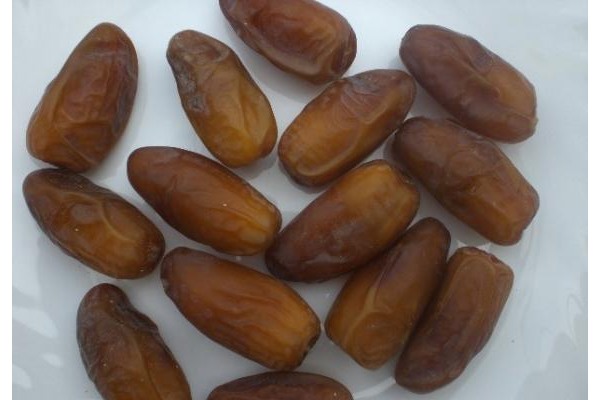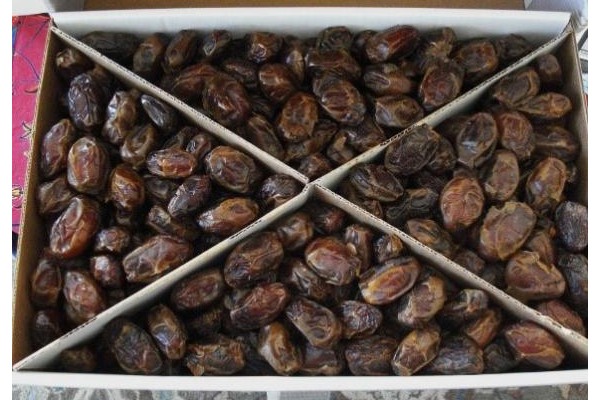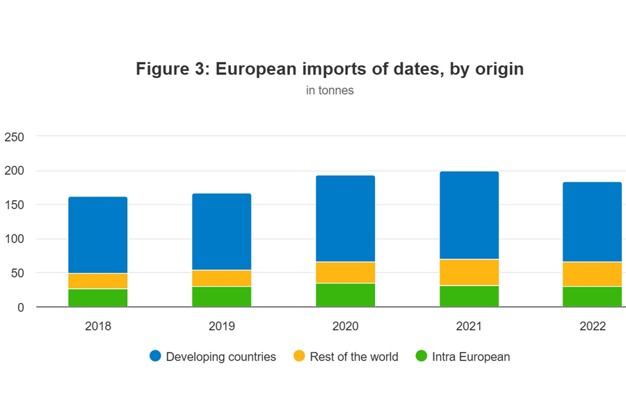In the long term, the European market for dates is expected to show stable growth. This growth is likely to be driven by changes in the consumption patterns of European consumers. This includes a rising interest in healthy snacking and sugar replacement. Another driving force will be consumption by the large number of immigrants arriving in Europe.

Product description
Dates are the fruit of the date palm tree (Phoenix dactylifera). Depending on the fruit's maturity, dates are referred to as fresh or dried. Fresh dates (usually with a moisture content of >50%) are rarely sold on the European market. The season for fresh dates is very short in producing countries and only a few varieties are appropriate for eating at this stage. Therefore, this study will only discuss the European market for dried dates (sometimes called 'table dates').
When left on the tree, dates will ripen, change colour, soften and reduce in size, weight and moisture content, but increase in sugar content. When picked early to avoid damage by rain, insects or other factors, dates may need to be additionally ripened after harvest. After harvesting and cleaning, conventional dates are protected from insects through fumigation, while organic dates are ideally treated by freezing (temp. -22°C). Often, they can be again rehydrated for better softness and pasteurised by being exposed to higher temperatures. They are sorted into grades by quality and size and stored in a cool place.

Dates can be produced with a lower (<15%) moisture content or a higher (<30%) moisture content. Dates with a higher moisture content need to be stored at a temperature between 0 and 4°C. Even when dry, dates are often stored in frozen form to prolong shelf life. Generally, a frozen cold chain is then maintained during transport and further storage. For the retail shelves, processed dates will be offered at ambient or fridge temperature.
Most of the world's date production is concentrated in the subtropical climate of North Africa and the Middle East. The harvesting season extends from July to late November, depending on the variety. However, the main harvest starts in September. World date production is increasing, reaching 1,15 million tonnes in 2022. Saudi Arabia is the leading producer of dates, with a 20% share of the world's production. It is followed by Iran (14%), the United Arab Emirates (12%), Tunisia (11%), Egypt (11%) and Algeria (10%).
More than 3000 date cultivars are grown worldwide. They are generally classified into 2 categories: cane sugar varieties and invert sugar varieties. In most varieties, the sugar content is almost entirely of the inverted form (glucose or fructose), but a few varieties contain cane sugar (sucrose). The 2 cultivars are distinguished by their popularity on the world market: Medjool (invert sugar variety) and Deglet Nour (cane sugar variety). Medjool dates are particularly popular, representing around 25% of the total world exports.

For more information:
CBI
Tel: +31 (0)88 042 4300
Email: [email protected]
www.cbi.eu
